
Spain’s Canary Islands in the Atlantic Ocean are named after birds for good reason. They’re the winter retreat of flocks of Europeans escaping the cold and most everyone who comes here flies in.
But increasingly they’re cruise features in the fall and winter as itineraries continue to shift away from the troubled Middle East and Persian Gulf. Instad of heading the usual way to and from Asia through the Suez Canal, grand cruises are routing the long way around Africa. These tropical islands are logical stops on the routes to and from the Mediterranean and they’re also featured on trans-Atlantic cruise itineraries for many lines, including Celebrity, Cunard, Oceania and Royal Caribbean.
In a new twist, some cruise lines that would originally be planning to wiinter in the Emirates are focusing on the Canaries instead. MSC Opera is doing an entire winter season of Canary Islands and Madeira sailings from Tenerife in the winter. And Windstar Cruises is making the islands a focus as it shifts attention to year-round Eurpean sailing aboard Wind Star for the winter of 2025-2026. Star Pride visits the Canaries in the spring of 2025.
Even though the islands are small, there’s plenty to see. It turns out that a pair of Canaries couldn’t be more different, even though they’re practically kissing cousins. Let’s learn what the little birds can tell us:
Santa Cruz, Tenerife
Modern high rises and broad highways are the feature of Tenerife Island that’s all about commerce. Santa Cruz is the main city and port. It shares the title of capital of the Canaries and depends on government bureaucrats, students and tourists for its livelihood, so as you might expect, its streets are lined with fashionable shops and very intriguing restaurants.
The busy port is an interesting challenge for cruise passengers. Ships dock close enough to the downtown get a panorama of the city, but its pier hooks around a long expanse of water, so that it can be a long walk from the gangway into town.
Fortunately, the city provides shuttle bus service. Unfortunately, the shuttle stops at the edge of the port and there’s still a ltrek up stair cases and across busy streets to get to the downtown pedestrian zone. That’s why you might consider a tour organized by your ship.
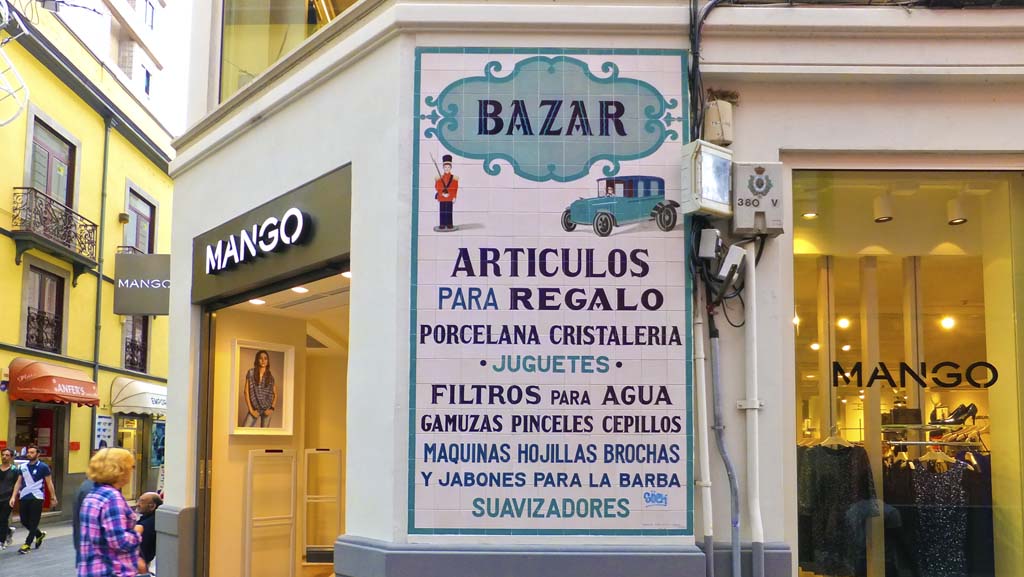
We happened to be in town on a Sunday, which in many places in Spain would mean the stores are all closed and there wouldn’t be much to do, other than have brunch and admire the classic buildings. That would still be fascinating because the narrow lanes of the old city are rich in whimsical doorways and intricate decorative ceramic tile
However, they cater to tourists here and I was happy to find that the outlets of major retailers wee not only open but clothing stores had a wide range of sizes in stock.
After lunch, I also found it an easy and fascinating walk to see one of the city’s must-do attractions: an ultra-modern auditorium, that features “sails” in the shape of wings.
Lanzarote, Arrecife
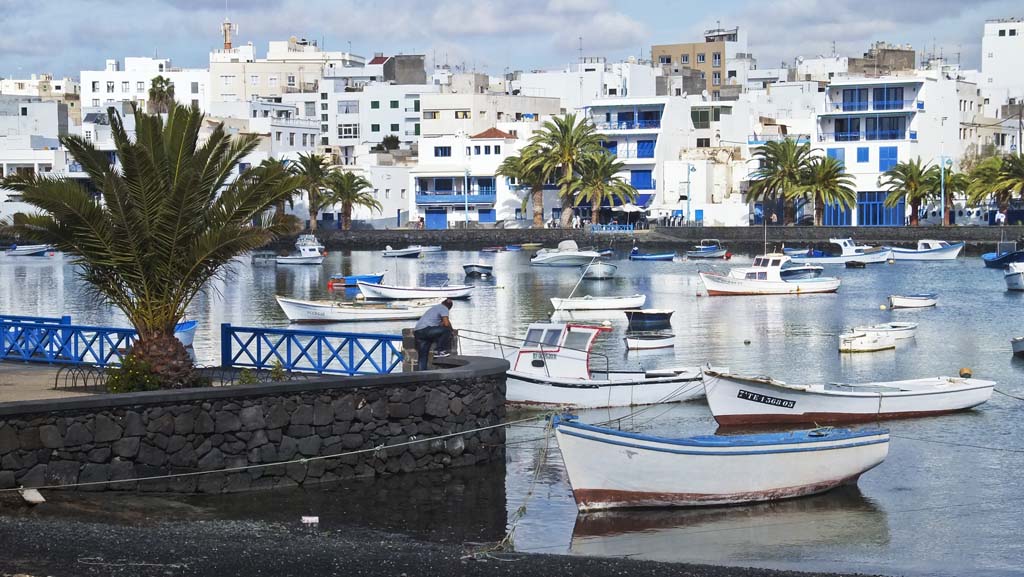
Blue and white are natural choices for painting buildings on an island in the Atlantic Ocean. But what were they thinking when the islanders of Arrecife decided that those are the only colors allowed in the spectrum?
It’s the law in Lanzarote, the main town on Arrecife, and the effect is…overwhelming. Entire neighborhoods of flat-roofed stucco buildings here are consistently whitewashed in brilliant white and windows and doors are trimmed in an identical shade of deep sea blue. There was little to differentiate one cube from another.
It seems the decision to limit the color spectrum is due to the influence of artist Cesar Manrique, who literally lived in a bubble. His home was in a series of natural caverns in the lava beds on the island and he managed to persuade islanders to impose his repetitive color scheme on every building in Lanzarote. To his credit, though, he also got everyone on board with the idea of preserving traditional building styles and opposing high-rise resort development as well as outdoor advertising. So things look very traditional.
Arrecife is an unusual island to say the least. Its moon-like landscape was the result of volcanic eruptions– not one or even a dozen, but hundreds that happened over a period of more than five years in the 1730s. It transformed a fertile farming island into a wasteland and the people had to look to fishing to make a living. There are still plenty of tiny boats in the harbor, known locally as “The Puddle” hauling in catches that are sold in shops along the coast.
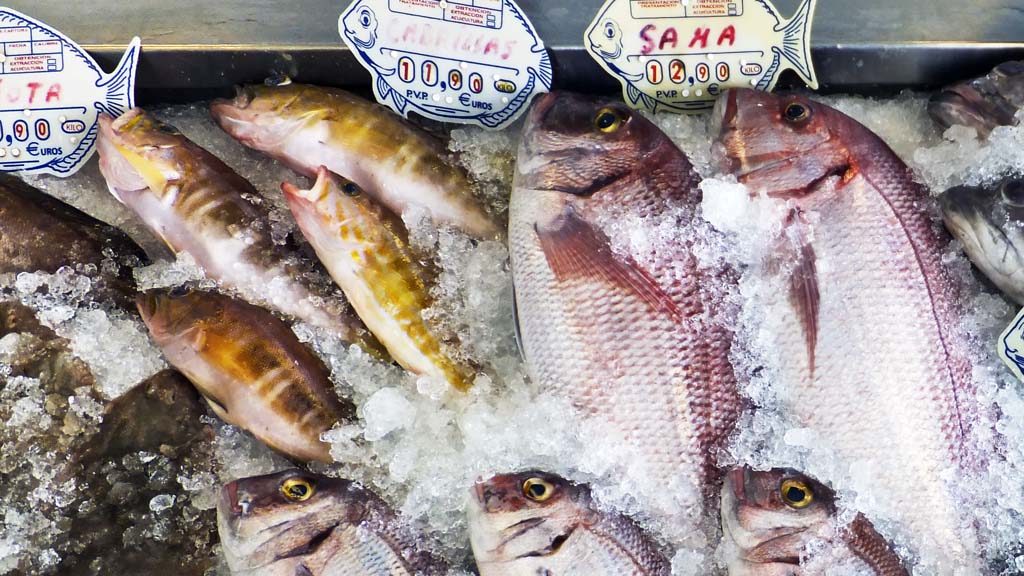
After wandering along a pleasant trail along the coast I did finally find the old town of Lanzarote, some of which dates back to the post-eruption days in 1700s. There some buildings and churches that do buck the blue and white norm and feature beiges and reds in their trim. And there are even some of the dreaded and formerly banned outdoor billboards, but they’re mostly small signs advertising restaurants and clothing shops having sales.
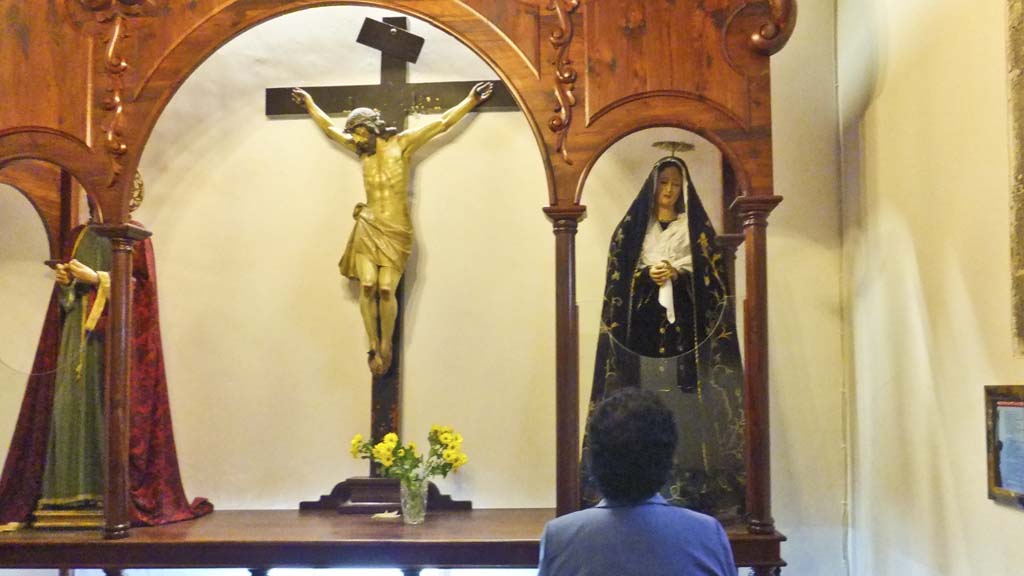
It’s definitely worth finding the venerable Catholic church of San Gines, which is a sanctuary of silence and meditation. It features a side altar with beautifully robed life-sized figures of Mary and Jesus which pilgrims seek out to pray to for favors.
The city itself isn’t worth a full-day’s outing, so the options are to head to one of the island’s many beaches or head inland to check out the volcanic landscape. It’s fascinating to take a tour of the treeless Timafaya National Park, which features hiking trails and bus tours of the lava badlands and around and even through the colvanic cones. A unique attraction is a herd of camels who can take riders on a lurching trek over the lava fields.
In all my time on the islands I didn’t spot a canary, but I did find several particularly friendly parrots.
Here’s looking at you.
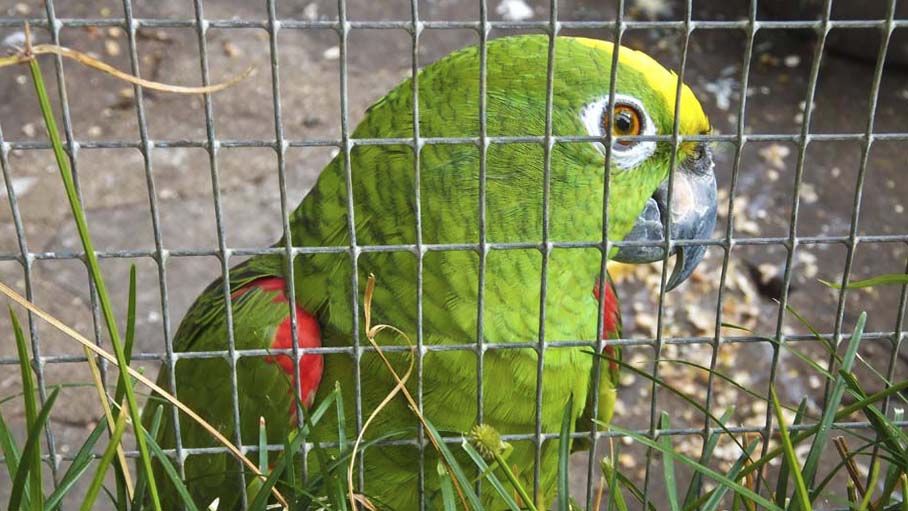
Story by Wallace Immen, The Cruisington Times







